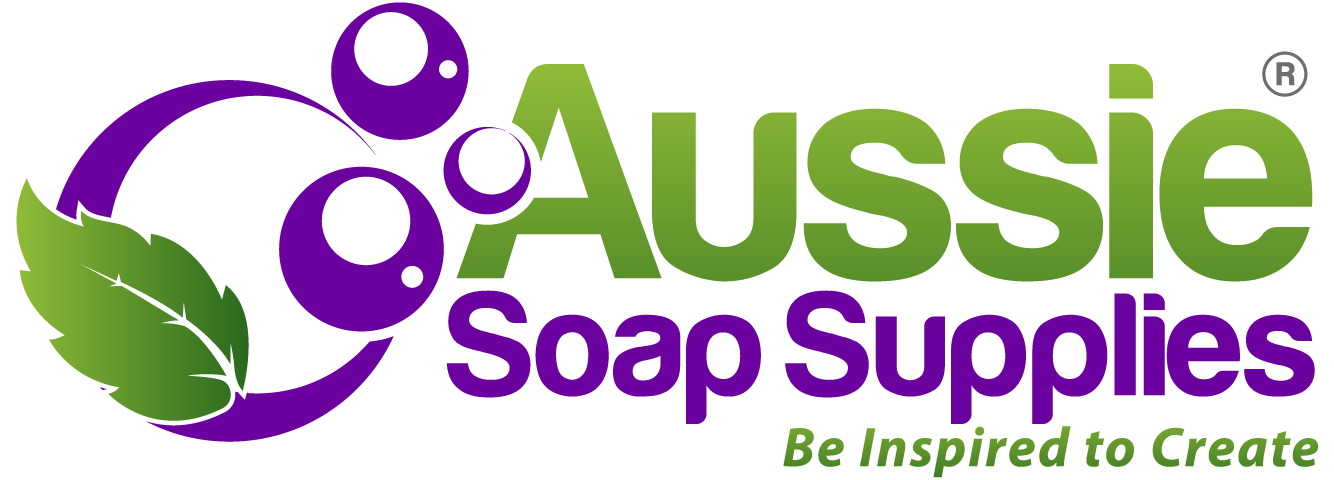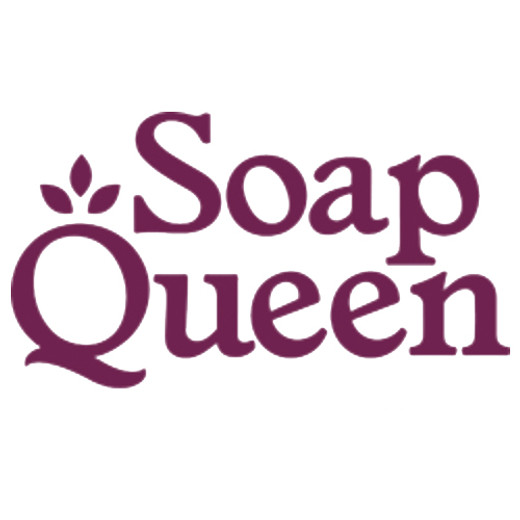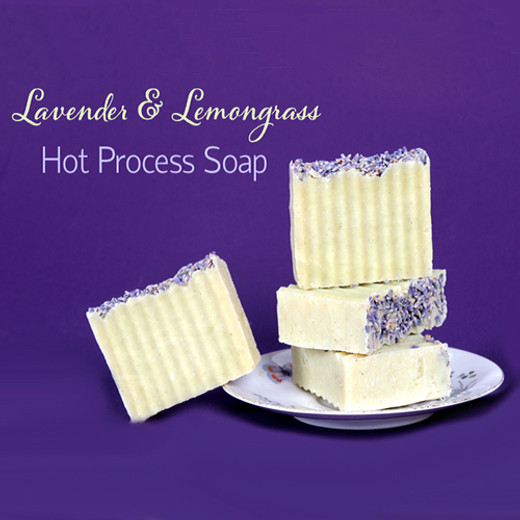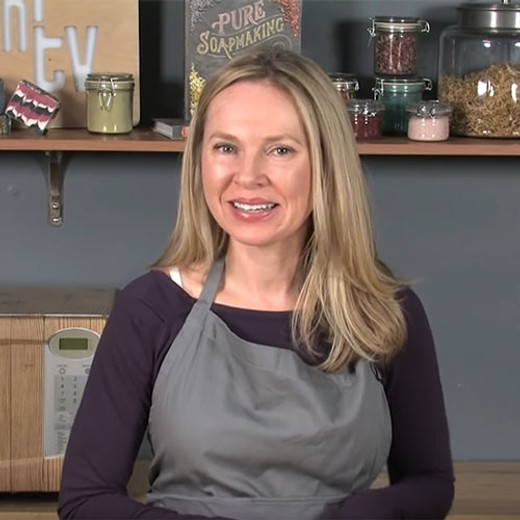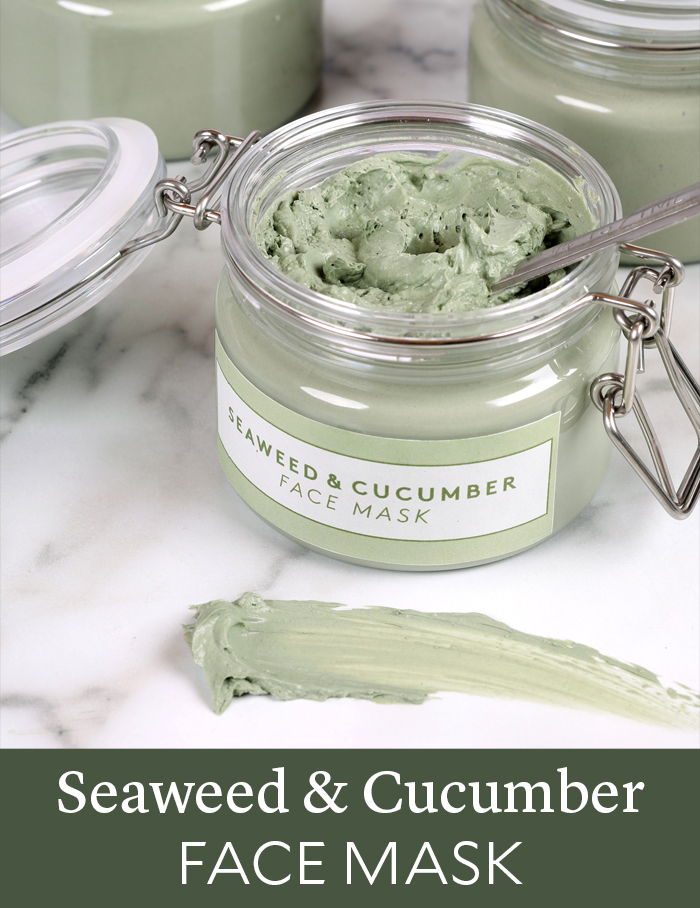
This is a Soapqueen.com recipe and tutorial and is reproduced here with permission.
Measurements are imperial, so just flick your digital scales to ounces.
Ingredients to substitute where necessary stocked by aussiesoappsuppliescom.au are noted
Face masks are a fun and effective way to pamper your skin. This Seaweed and Cucumber Face Mask is full of skin-loving ingredients and suitable for a variety of skin types. It’s created by emulsifying oils with water, and then adding a mixture of dry ingredients like sea clay and spirulina powder.
The oils in this mask were chosen for their light texture and nourishing properties. Cucumber seed oil is an excellent moisturizer and absorbs quickly. The seaweed extract is dispersed in fractionated coconut oil, which is also light on the skin. They leave the skin feeling hydrated but not oily.
The mixture of kaolin clay and sea clay create a thick but spreadable texture that is not overly drying. This mask is good for normal and combination skin. If you have dry skin, you can use less clay as shown in the DIY Lavender Clay Face Mask. If you have oily skin, increase the amount of clay as shown in the DIY Sea Clay Mask.
Spirulina powder is added for color and skin benefits – it’s an algae rich in vitamins, nutrients, and antioxidants. It has a deep green hue, which gives this face mask a beautiful color. If you’ve worked with it before, you know spirulina does have a fishy odor. We found the ginger essential oil in this recipe covered it up nicely.
Ingredients:
- FREE Bramble Berry Label
- Four 8 oz. Bail Jars
- 21.4 oz. Distilled Water
- 1 oz. Cucumber Seed Oil
- 1.3 oz. Avocado Oil
- 1 oz. Polawax Emulsifying Wax
- 0.8 oz. BTMS-50 Conditioning Emsulifier (can substitute BTMS 25 Conditioning Emulsifier)
- 5 oz. Kaolin Clay
- 2 oz. Sea Clay
- 0.4 oz. Spirulina Powder (can substitute Chrome Green Oxide for a similar colour or leave uncoloured)
- 3 mL Ginger Essential Oil
- 0.5 oz. Seaweed Extract
- 0.2 oz. Optiphen (or Phenoserve or Preservative EPE)
A few notes about recipe substitutions and changes:
- Polawax Emulsifying Wax is a highly reliable and strong emulsifier. It can be substituted for the generic version, Emulsifying Wax, if you prefer, although this recipe was not tested with it. Due to the clay in the recipe, we splurged and used Polawax Emulsifying Wax to avoid any chance of separation.
- This recipe calls for avocado and Cucumber Seed Oil. Other oils can be used instead if you prefer; we recommend staying with liquid oils that absorb easily into the skin. Changing the total amount of oil in the recipe will change the overall texture of the mask.
- Because this recipe is essentially a lotion and contains a large amount of water, a preservative is necessary to prevent mold and bacterial growth. We chose Optiphen, but other preservatives will work.
- Increase the total amount of clay if you want it to be better suited for oily skin, or decrease the amount to make it better for dry skin. Decreasing the amount of clay may create a thinner product.
- If you prefer to use different clays, feel free to swap them. Clays have different absorbing properties, which will affect how the mask feels on the skin. Learn which clay is right for your skin here.
- If you have very sensitive skin, fragrance and essential oils can be irritating. Omit from the recipe if you prefer.
- Seaweed extract can be substituted with a different extract if you prefer. Find more extracts here.
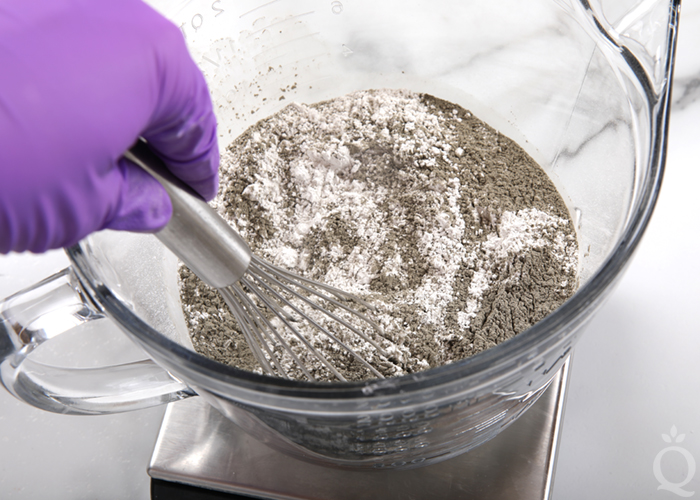
Equipment Prep:
Disinfect your utensils by dipping them in a 5% bleach water solution and allowing to dry. This includes mixing containers, your stick blender, and any spoons or spatulas that may come in contact with your mask. Your products must be as free of germs, bacteria, and microbes as possible. To be safe, bleach water all your utensils.
Method:
- In a medium container, measure 5 ounces of kaolin clay, 2 ounces of sea clay, and 0.4 ounces of spirulina powder. Mix them together thoroughly.
- In a heat-safe container, combine the avocado oil, cucumber seed oil, BTMS-50 and Polawax. Heat the container in the microwave using 30-60 second bursts until the waxes have fully melted. Be careful when removing the container, as it will be quite hot. Set aside.
- In a separate large container, heat the distilled water in the microwave (or on the stove top) until it reaches about 160-170 ° F. Once the water reaches the correct temperature, some of it may evaporate. Remeasure and add more distilled water if necessary until you have 21.4 ounces of hot water.
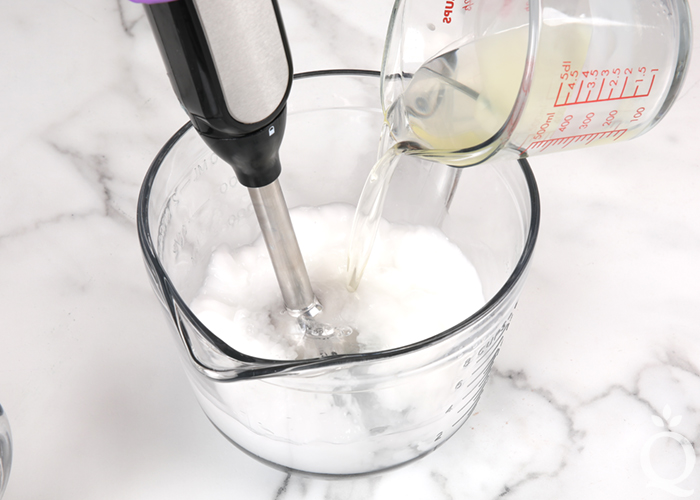
- Check the temperatures of both containers. Each container should be about 160° F. If the oil and wax has cooled, place back into the microwave until fully melted.
- Place the stick blender into the water, and burp it to help get rid of bubbles.
- Pour the oil and wax mixture into the water and use a spatula to make sure every little bit is added. Begin pulsing the stick blender. The mixture will take on a milky appearance once the water, oil and waxes have begun to emulsify. Continue to pulse and stir for about a minute.
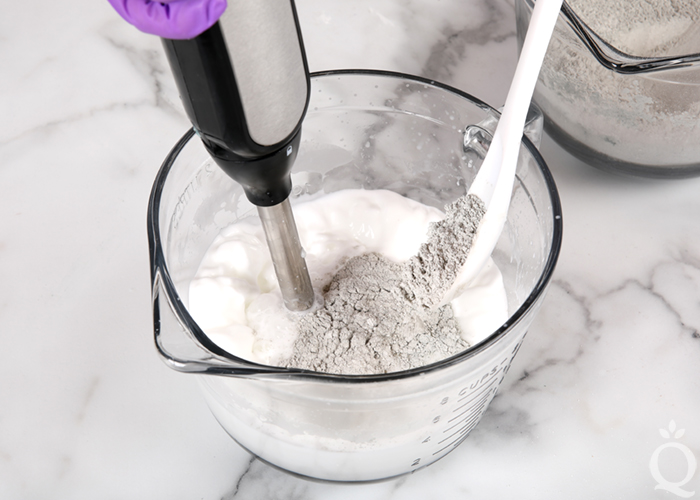
- Begin adding heaping spoonfuls of the clay mixture and pulsing the stick blender until combined. Continue to add the clay to the mixture and blend in small amounts until all the clay is added.
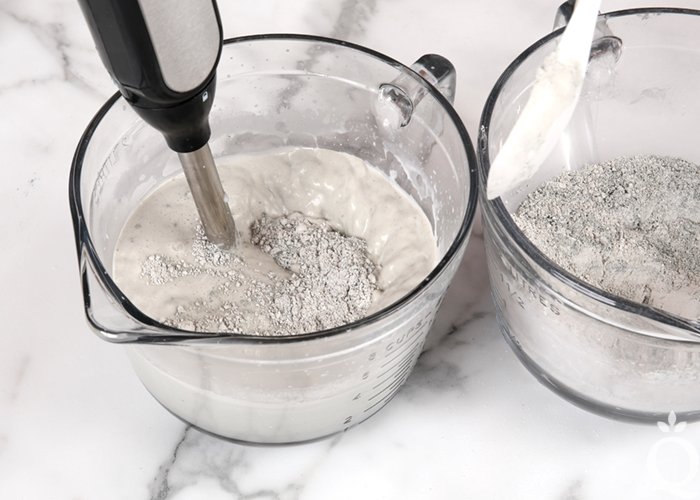
- Continue stick blending for about one to two minutes. Use a spatula to scrape down any clay that may be on the sides of the bowl.
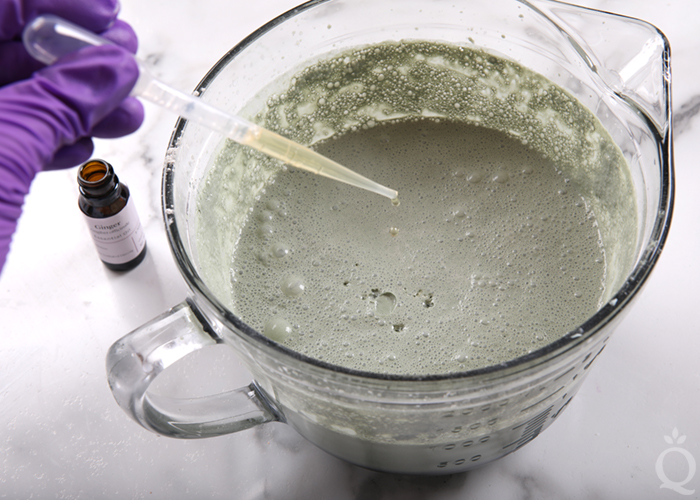
- Check the temperature of the mixture. Once the mixture is about 130-140°F, add 0.2 oz. of Optiphen, 3 mL of ginger essential oil, and 0.5 oz. of seaweed extract. Stick blend (don’t forget to burp the stick blender) the ingredients until fully mixed.
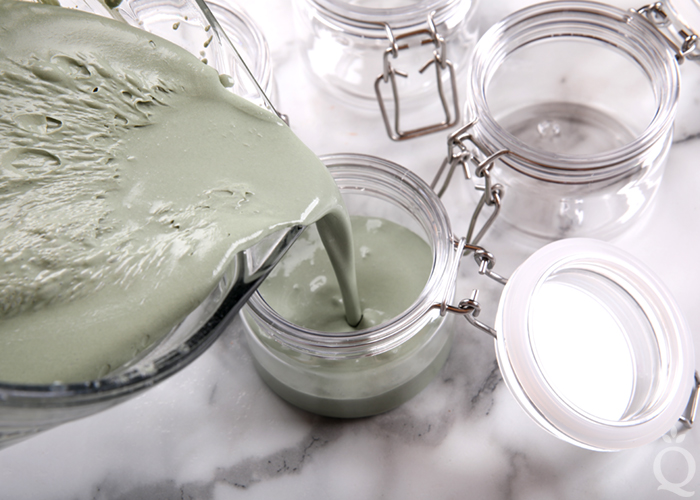
- Pour the mixture into the bail jars. Tap the jars on the counter to help get rid of bubbles. You can also spritz with alcohol to help get rid of bubbles. Allow the containers to cool for several hours with the lid open to prevent condensation.
- Once fully cooled, the mixture will be a thick, lotion-like texture. To use, apply a medium layer to dry, clean skin. Avoid the immediate eye area. Allow the mask to sit on the skin for at least 15 minutes. Use warm water to rinse off. There is no need to wash the skin after, but you can if you prefer.
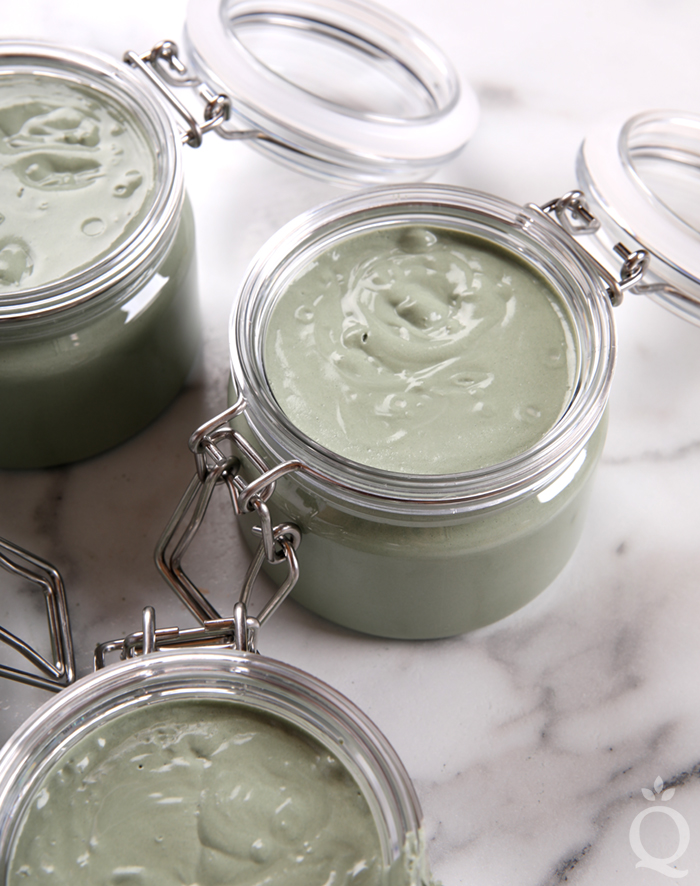
| Difficulty: | Intermediate |
| Yields: | 4 x 8oz jars |
